Abstract
Three pigeons were exposed to a series of procedures in which periods of response-independent food presentation, on a variable-time schedule, alternated with periods in which food was never presented. The stimuli that signalled periods of food availability or non-availability varied from one procedure to the next, and were sometimes key colors, sometimes tones, and sometimes compounds of both. Key pecking was initiated and maintained when key color was a signal for food; key pecking was not initiated when a tone was the signal for food. However, control of key pecking that was already established could be transferred from key color to tone, and subsequently, initiated by the tone. It is suggested that for pigeons, pre-experimental relationships exist among food, visual stimuli, and pecking, and that a similar relationship, which includes auditory stimuli, must be induced in the laboratory.
Full text
PDF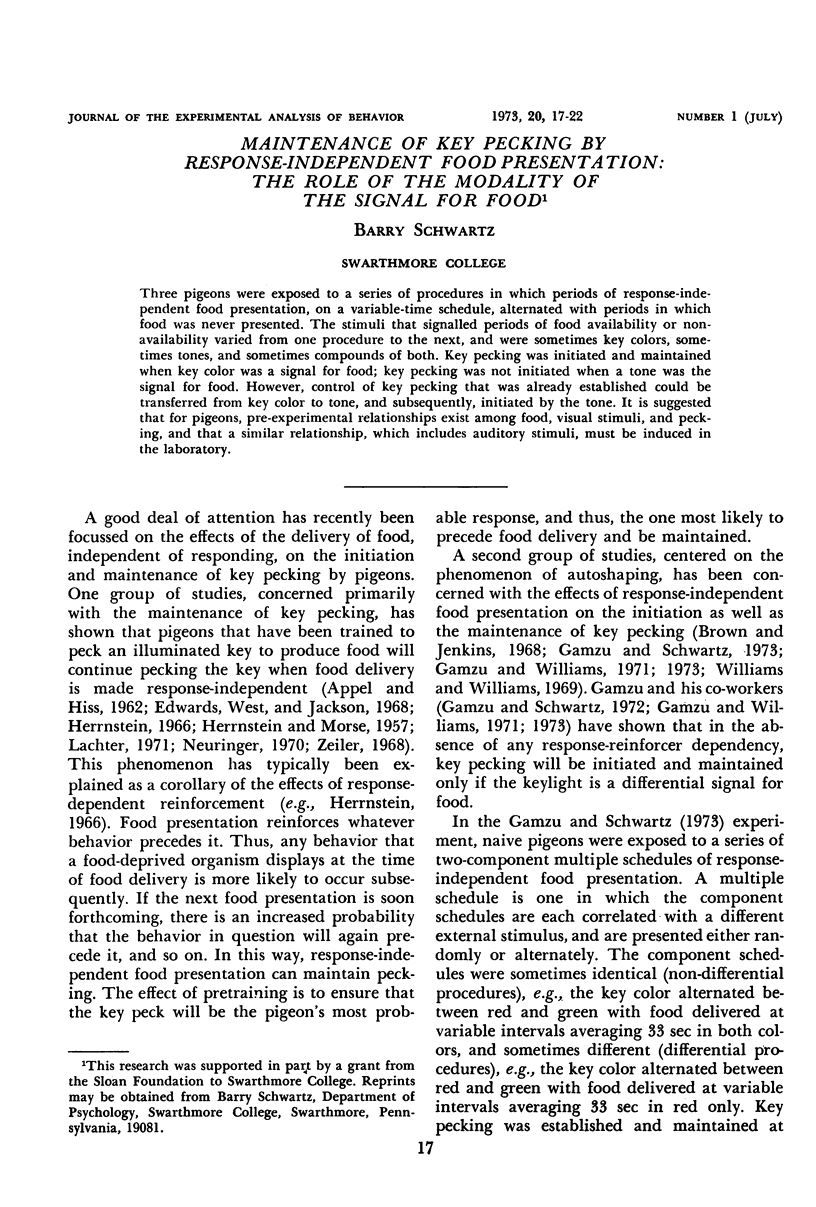
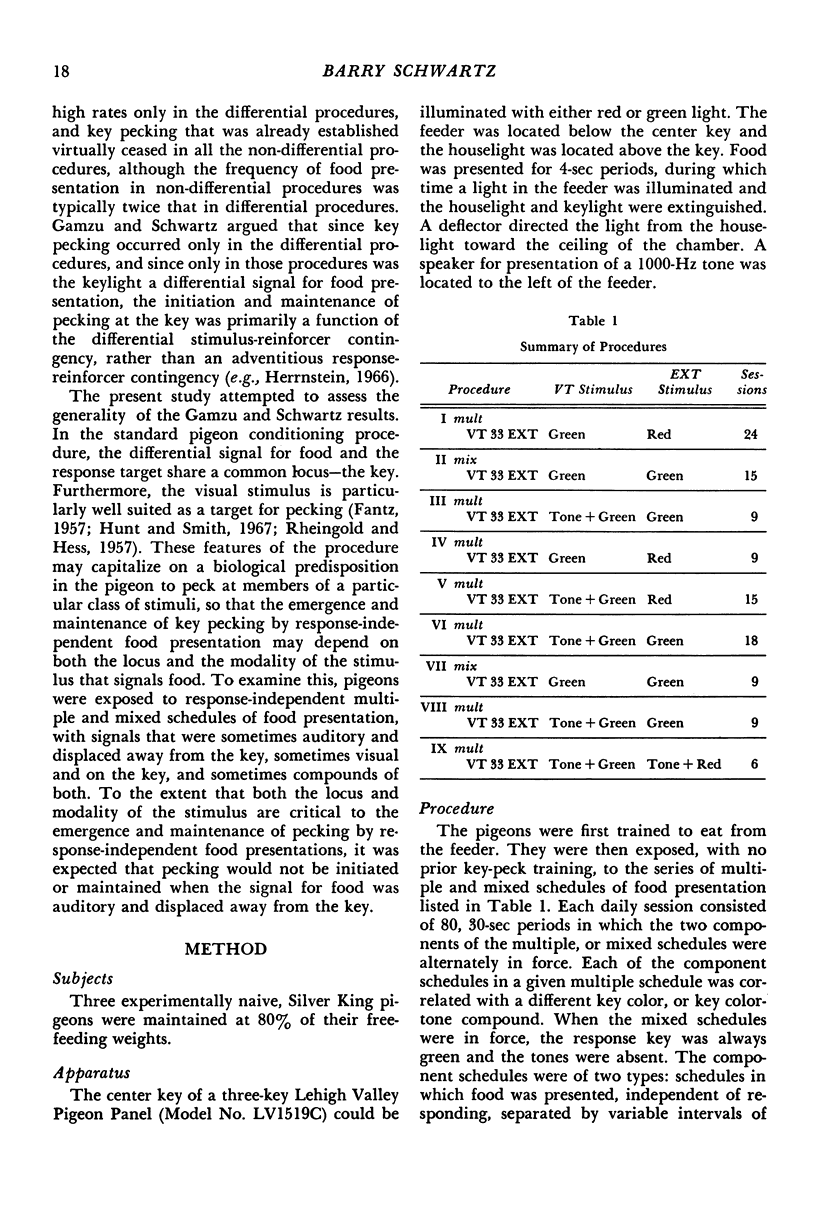
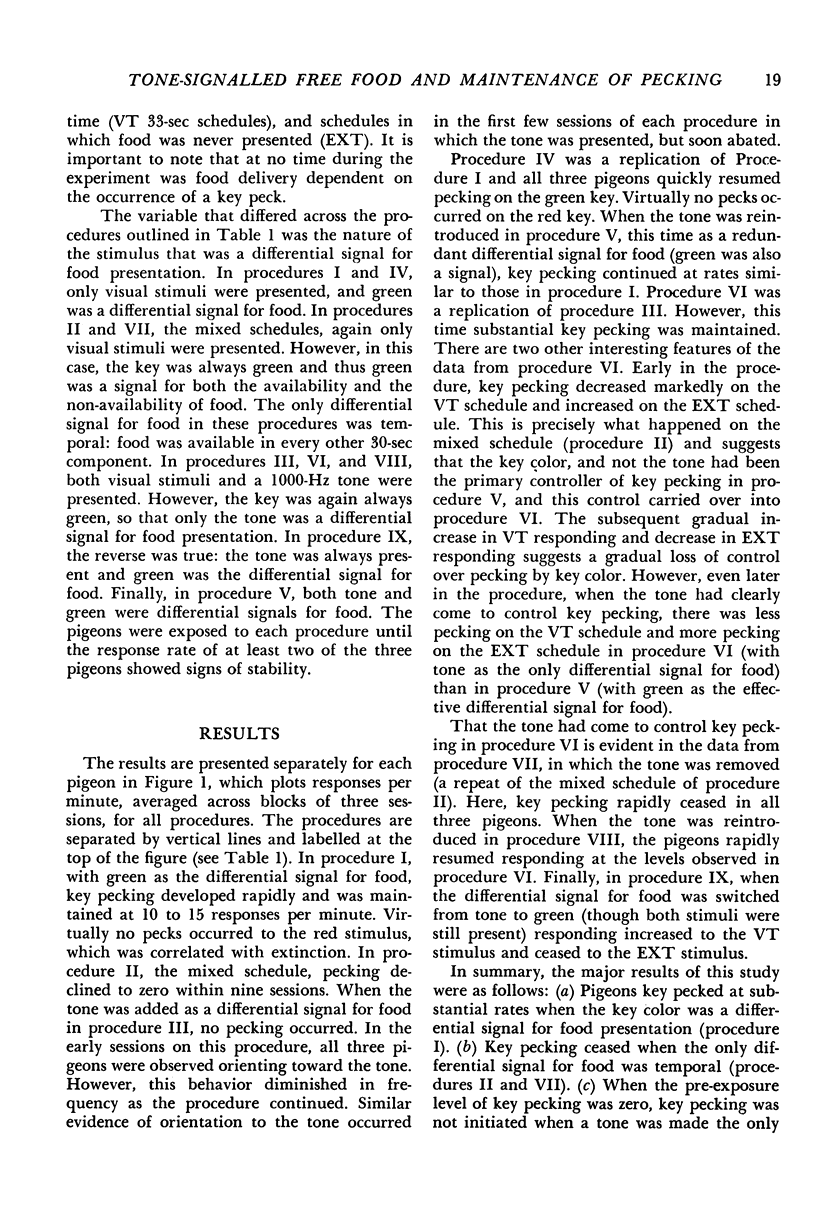
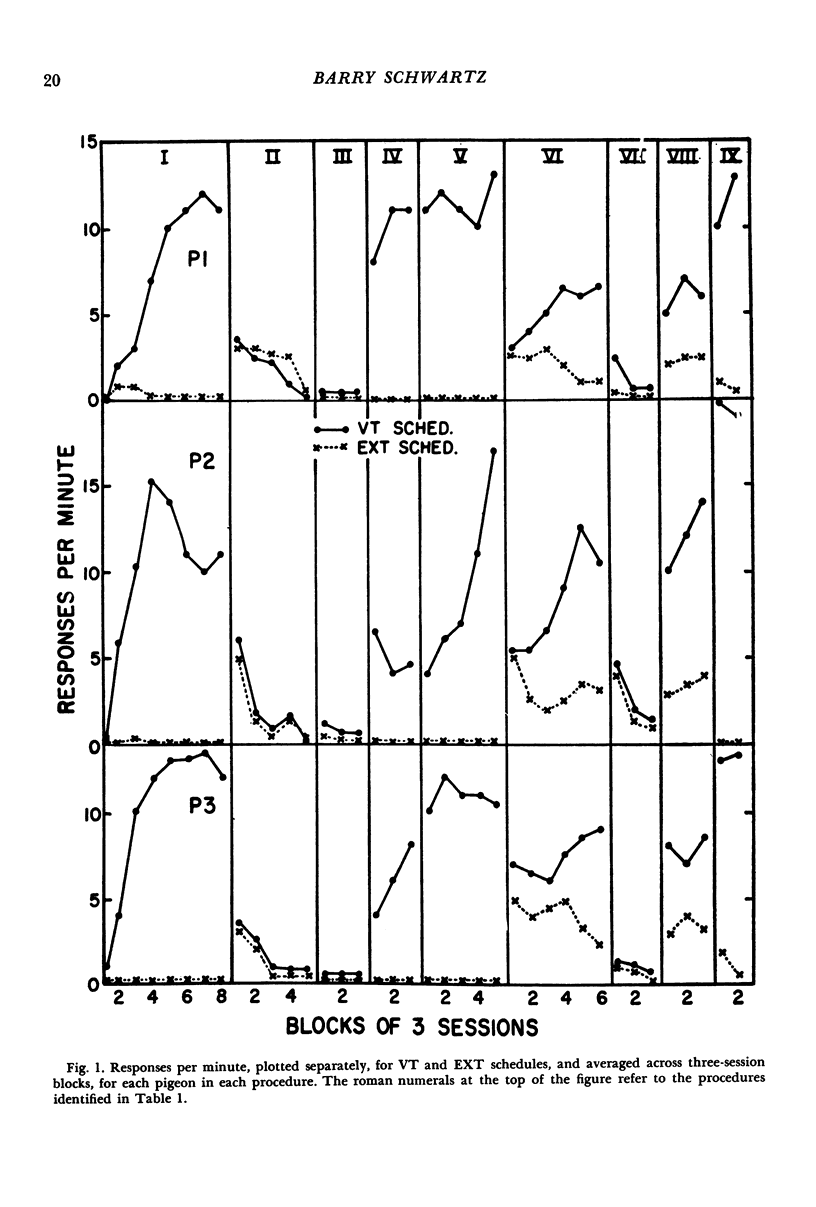
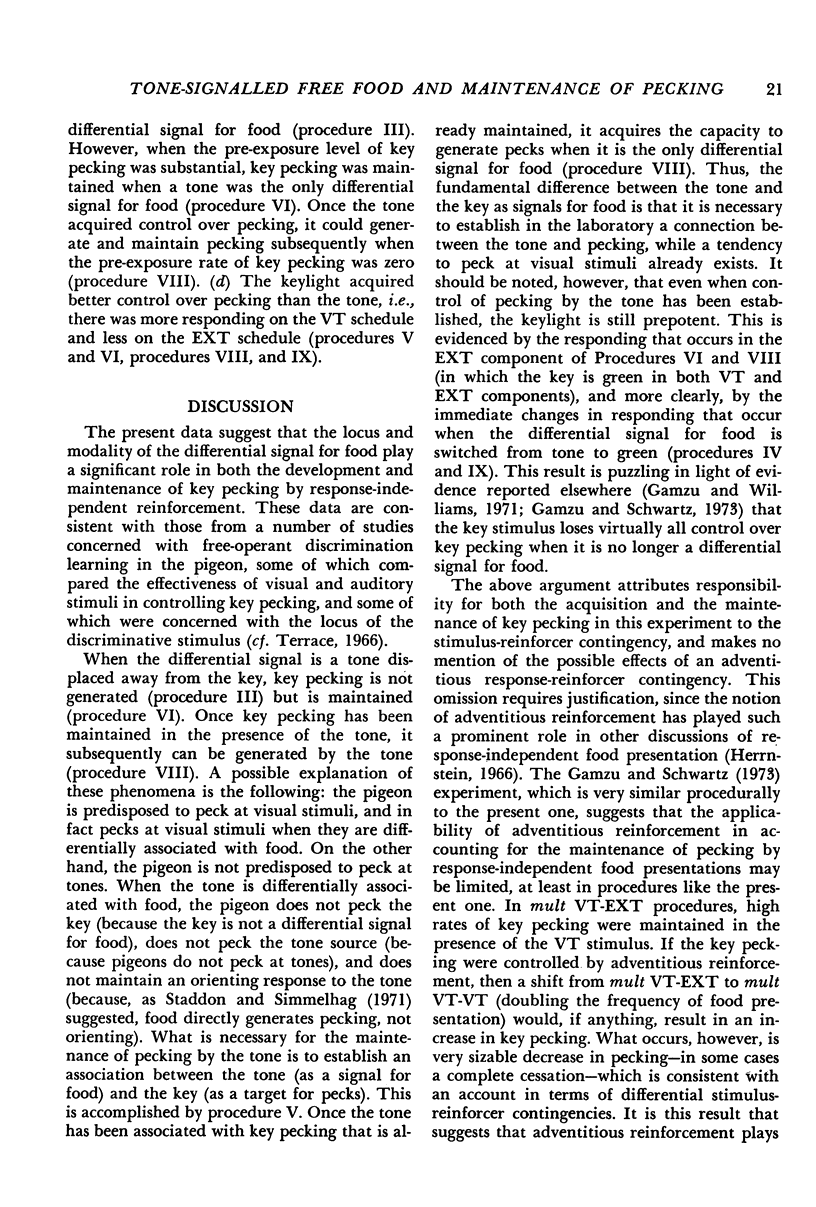
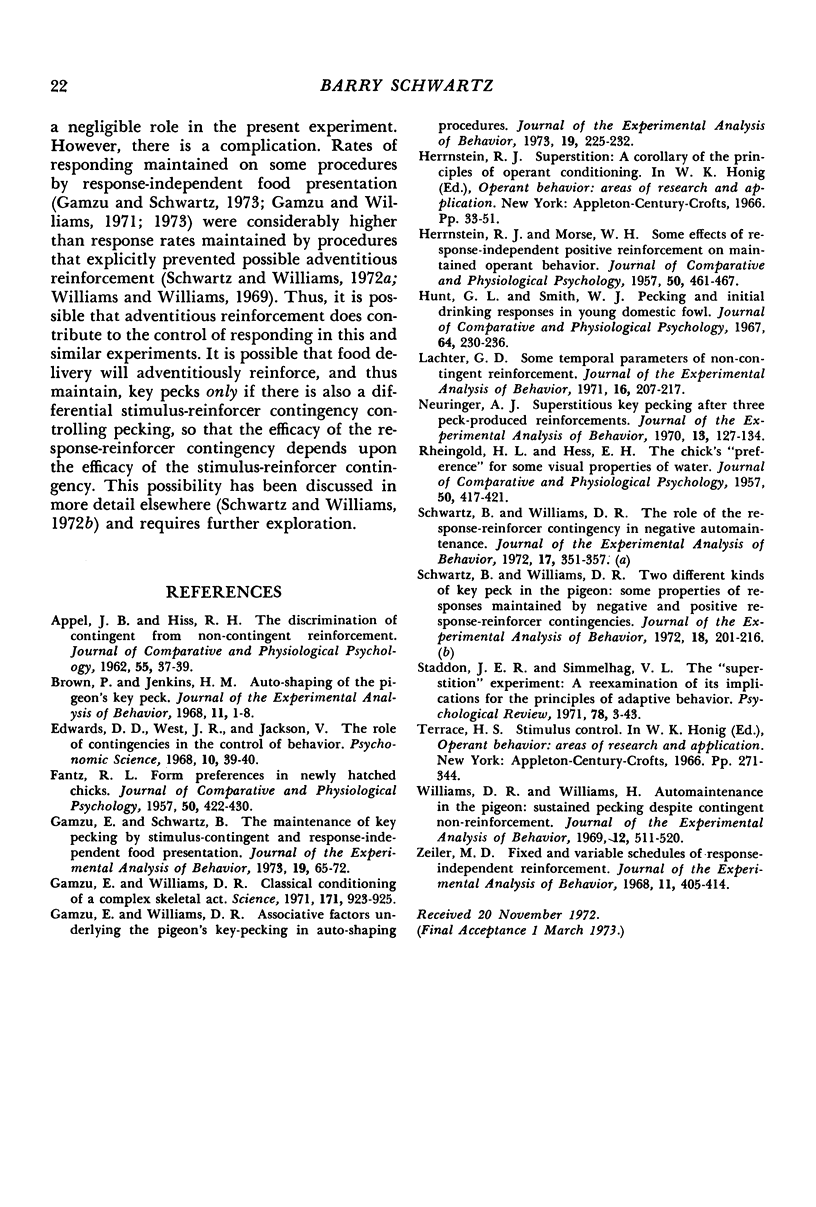
Selected References
These references are in PubMed. This may not be the complete list of references from this article.
- APPEL J. B., HISS R. H. The discrimination of contingent from noncontingent reinforcement. J Comp Physiol Psychol. 1962 Feb;55:37–39. doi: 10.1037/h0044613. [DOI] [PubMed] [Google Scholar]
- Brown P. L., Jenkins H. M. Auto-shaping of the pigeon's key-peck. J Exp Anal Behav. 1968 Jan;11(1):1–8. doi: 10.1901/jeab.1968.11-1. [DOI] [PMC free article] [PubMed] [Google Scholar]
- FANTZ R. L. Form preferences in newly hatched chicks. J Comp Physiol Psychol. 1957 Oct;50(5):422–430. doi: 10.1037/h0044973. [DOI] [PubMed] [Google Scholar]
- Gamzu E. R., Williams D. R. Associative factors underlying the pigeon's key pecking in auto-shaping procedures. J Exp Anal Behav. 1973 Mar;19(2):225–232. doi: 10.1901/jeab.1973.19-225. [DOI] [PMC free article] [PubMed] [Google Scholar]
- Gamzu E., Schwartz B. The maintenance of key pecking by stimulus-contingent and response-independent food presentation. J Exp Anal Behav. 1973 Jan;19(1):65–72. doi: 10.1901/jeab.1973.19-65. [DOI] [PMC free article] [PubMed] [Google Scholar]
- Gamzu E., Williams D. R. Classical conditioning of a complex skeletal response. Science. 1971 Mar 5;171(3974):923–925. doi: 10.1126/science.171.3974.923. [DOI] [PubMed] [Google Scholar]
- HERRNSTEIN R. J., MORSE W. H. Some effects of response-independent positive reinforcement on maintained operant behavior. J Comp Physiol Psychol. 1957 Oct;50(5):461–467. doi: 10.1037/h0041506. [DOI] [PubMed] [Google Scholar]
- Hunt G. L., Jr, Smith W. J. Pecking and initial drinking responses in young domestic fowl. J Comp Physiol Psychol. 1967 Oct;64(2):230–236. doi: 10.1037/h0088041. [DOI] [PubMed] [Google Scholar]
- Lachter G. D. Some temporal parameters of non-contingent reinforcement. J Exp Anal Behav. 1971 Sep;16(2):207–217. doi: 10.1901/jeab.1971.16-207. [DOI] [PMC free article] [PubMed] [Google Scholar]
- Neuringer A. J. Superstitious key pecking after three peck-produced reinforcements. J Exp Anal Behav. 1970 Mar;13(2):127–134. doi: 10.1901/jeab.1970.13-127. [DOI] [PMC free article] [PubMed] [Google Scholar]
- RHEINGOLD H. L., HESS E. H. The chick's preference for some visual properties of water. J Comp Physiol Psychol. 1957 Oct;50(5):417–421. doi: 10.1037/h0046108. [DOI] [PubMed] [Google Scholar]
- Schwartz B., Williams D. R. The role of the response-reinforcer contingency in negative automaintenance. J Exp Anal Behav. 1972 May;17(3):351–357. doi: 10.1901/jeab.1972.17-351. [DOI] [PMC free article] [PubMed] [Google Scholar]
- Schwartz B., Williams D. R. Two different kinds of key peck in the pigeon: some properties of responses maintained by negative and positive response-reinforcer contingencies. J Exp Anal Behav. 1972 Sep;18(2):201–216. doi: 10.1901/jeab.1972.18-201. [DOI] [PMC free article] [PubMed] [Google Scholar]
- Williams D. R., Williams H. Auto-maintenance in the pigeon: sustained pecking despite contingent non-reinforcement. J Exp Anal Behav. 1969 Jul;12(4):511–520. doi: 10.1901/jeab.1969.12-511. [DOI] [PMC free article] [PubMed] [Google Scholar]
- Zeiler M. D. Fixed and variable schedules of response-independent reinforcement. J Exp Anal Behav. 1968 Jul;11(4):405–414. doi: 10.1901/jeab.1968.11-405. [DOI] [PMC free article] [PubMed] [Google Scholar]


